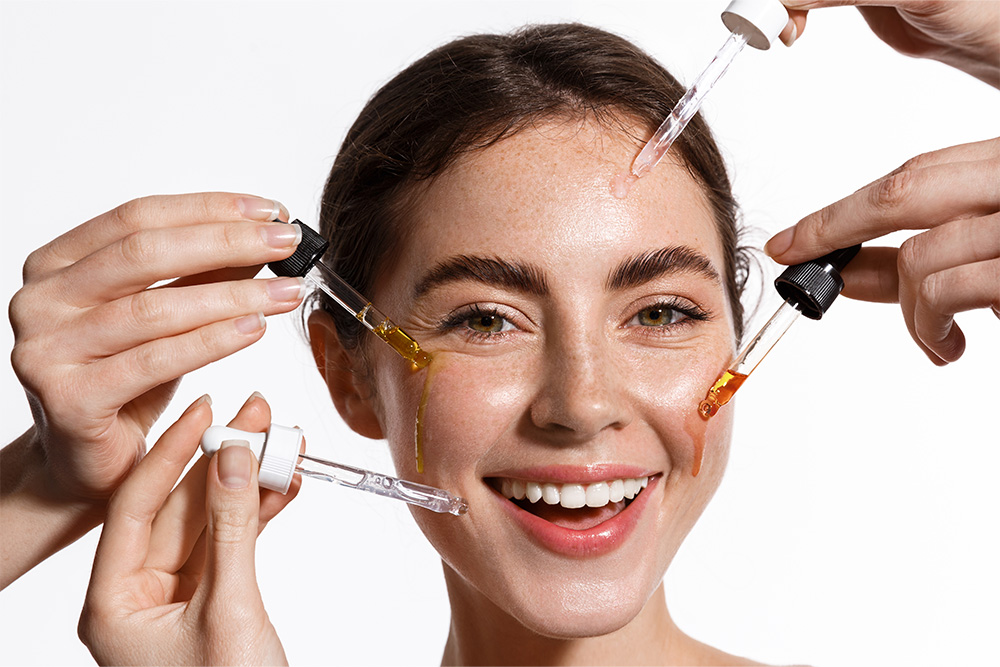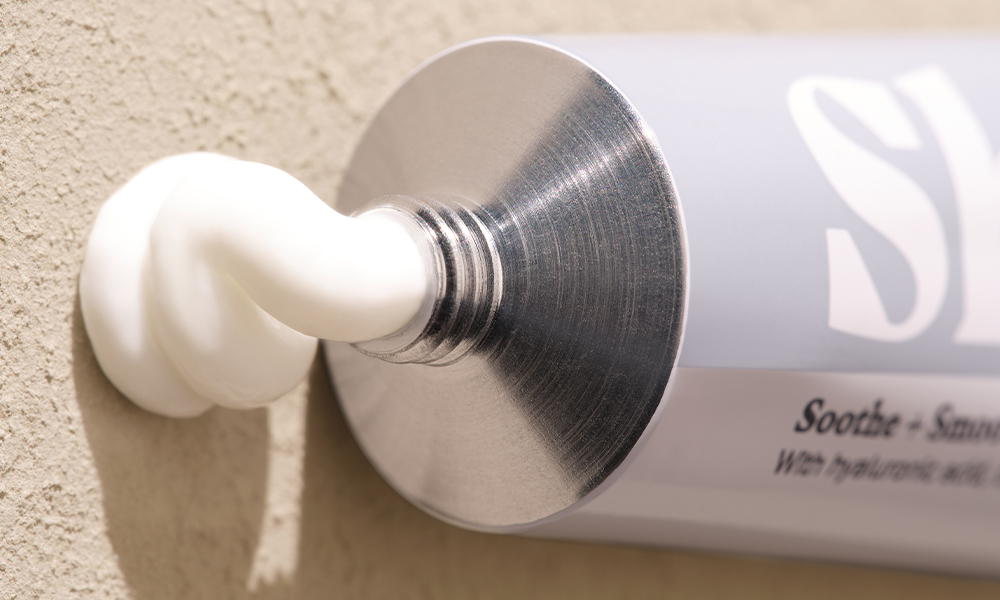Ask A Dermatologist: Skincare Tips For Winter

Link to share article here:
What Are Active Ingredients In Skincare?
There’s a lot of chatter about “active ingredients” in the skincare world at the moment. The phrase is popping up everywhere, from social media to TV ads, on packaging and in the press. But are active ingredients really the holy grail we’ve been led to believe – or is this just another buzz-phrase that doesn’t really deliver?
Well, the good news is that this is a skincare trend that is rooted in real results. Yes, you can believe the hype – dermatologists have been using active ingredients for decades to help their clients see a visible difference in the mirror.
But what actually are active ingredients – or “actives”, for skincare buffs – and how can you add them to your skincare routine? Read on to find out about all things active.
Active ingredients vs cosmetic ingredients
We’re pulling back the curtain to introduce you to some skincare industry standards. In the world of dermatology, ingredients can be split into two categories – “active” and “cosmetic”.
Active ingredients are powerful enough to really change your skin. They might fight acne, increase collagen production or reduce inflammation, but the thing they all have in common is that they go deep. Certain active ingredients actually work on a cellular level to change the structure of your skin, improving its appearance and can even reduce the risk of future damage – pretty smart right?
And, if you feel like you’ve been hearing more about them recently, then that’s because you probably have. “Skincare consumers have become much more aware of active ingredients over the past few years and have a better understanding of the science behind how they work and this thirst for knowledge is growing,” explains Dr Jason Thomson, Head of Medical at Skin + Me. “Almost 50% of consumers say that actives are the most important factor when purchasing a skincare product.”
On the other hand, cosmetic ingredients are more surface level. They can provide hydration or brighten the skin, but the results are temporary and these products won’t always target the underlying issues behind your skin concerns.
How can I use active skincare ingredients?
Do your research and pick active ingredients that will specifically target your skin concerns – you’ll find plenty of reading material right here on The Dose. Choose them carefully and don’t overload your skin – your routine should support your skin rather than strip it.
“It’s very easy to be overwhelmed and tempting to have an over-complicated skincare regime,” says Dr Jason. “This is unnecessary, expensive and you risk damaging your skin barrier if you’re applying too many products with powerful active ingredients.”
Better still, speak to a professional who can analyse your skin and hand-pick the right active ingredients for you. You could go to an in-person appointment with a dermatologist or use a digital service like Skin + Me, where you submit a consultation form along with photos of your skin. Your personal Dermatology Clinician will review your skin and formulate a personalised skin treatment for you.
“Our treatments contain scientifically-proven active ingredients which are formulated into unique combinations, and concentrations that gradually increase over time, which help to give the best results, whilst minimising the risk of experiencing any side effects,” explains Dr Jason.
Active skincare ingredients
So, what are some examples of active skincare ingredients? Here are a few of the most common actives used by dermatologists, each with their own benefits and uses. There are many more than those listed below, but these ones are often used by clinicians, including the Skin + Me Dermatology Team.
Retinoids
Retinoids are a family of synthetic and naturally-occurring compounds derived from vitamin A. Retinol, tretinoin, retinaldehyde and retinal are all types of retinoids. They’re the most active form of vitamin A and can tackle several different skin concerns. Acne, textured skin, enlarged pores, hyperpigmentation and the early signs of skin ageing can all be improved with regular retinoid use. Just a quick word on Tretinoin – it’s only available on prescription in the UK, and is around 20 times stronger than retinol.
Clindamycin
Clindamycin is an antibiotic medication that inhibits the growth and reproduction of bacteria, making it an effective treatment for acne. Clindamycin is only available on prescription, and it has proven to be very safe when used under the supervision of a medical professional.
Metronidazole
Metronidazole has been shown to be effective in reducing inflammation along with papules and pustules caused by rosacea. It works by targeting the bacteria that thrive in the hair follicles and contribute to the inflammatory response. Metronidazole works against the acne-causing bacteria, propionibacterium acnes, to help promote clearer skin.
Hydroquinone
Hydroquinone is a prescription-only ingredient which lightens patches of the skin. Dermatologists may prescribe it in cases of hyperpigmentation, which is when dark areas appear on the skin as a result of inflammation, sun damage or melasma.
Azelaic Acid
Azelaic acid is a multitasking active which can be bought over the counter or prescribed. Cosmetic formulations tend to contain azelaic acid at strengths up to 10%, whereas prescription will usually have higher strengths of up to 20%. It’s a great multitasker – its antibacterial properties combat spots, while it also targets redness and inflammation caused by rosacea or acne. By promoting skin cell turnover, azelaic acid can regulate dark spots and promote smoother, more youthful-looking skin.
Niacinamide
Niacinamide is an antioxidant that tackles a myriad of skin concerns from oil regulation to barrier repair, and boosts cell rejuvenation for a healthy, more radiant complexion. It can be found in many skincare products off the shelf, and mixes well with more potent active ingredients too.
Five things you should know before using active skincare ingredients
1. Don’t overload your skin – start with a lower concentration and increase the strength of your active ingredient as your skin adapts. That’s why Skin + Me treatment plans evolve over time, with concentrations only increasing when your skin is able to tolerate it.
2. Prioritise hydration – although they can provide amazing results, some active ingredients can make your skin a little dry. Pick your moisturiser carefully – we’d recommend using one that includes hyaluronic acid and ceramides to keep your skin feeling supple and soft.
3. Choose carefully – the wrong active ingredients can do more harm than good, so make sure that you do your research before putting them on your face. Better still, speak to a dermatology pro – like the clinicians at Skin + Me, who will select the right ingredients for your skin.
4. Create a dream routine – supportive products will help reduce irritation and keep your skin feeling happy. A gentle cleanser and a soothing moisturiser are a great place to start – why not try the Skin + Me range?
5. Don’t skip the sunscreen – everyone should be wearing sunscreen every single day, but it’s even more essential if you’re using active ingredients. Some actives can increase your skin’s sensitivity to sunlight, so you need to be well protected. We’d recommend using Daily Defence Oil-free SPF 50 Sunscreen, which was specifically designed for using alongside actives.
Final thoughts
Active ingredients are the most efficient way to get visible results at home. They work deep in the skin to target your concerns, and the right supporting routine will help keep your skin hydrated and healthy. Just remember to take it easy, especially at first, and don’t go a day without sunscreen.
New to Skin + Me? Get your first month of personalised skincare for £4.99 with promo code DOSE – complete our quick consultation here.
Looking for a routine refresh? Add the Dream Routine to your Skin + Me subscription.
In need of a restock? Head to The Skincare Shop for one-off purchases of your Routine Essentials.



